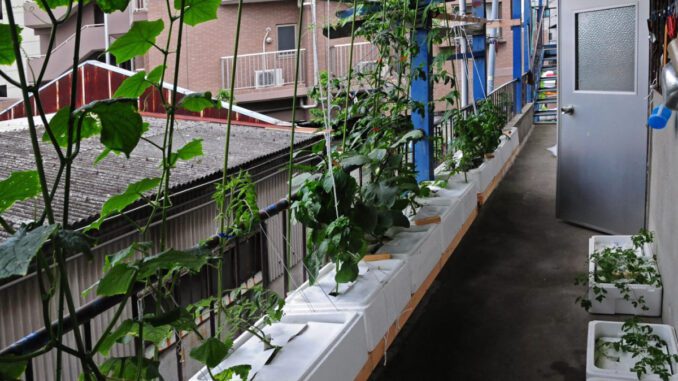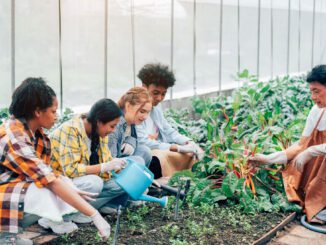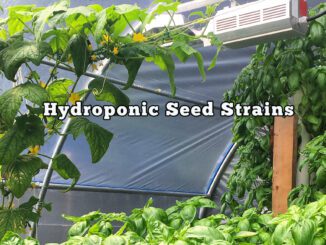
Simplified Hydroponics Across Colombia
Simplified Hydroponics Colombia | The Borgen Project |
TAMPA, Florida — With changing climates, cultures and a rapidly growing global population, scientists around the world are seeking new ways to grow food sustainably. In the 1980s, the United Nations Development Project (UNDP) recognized this need and established a project in Colombia to develop hydroponics – the technique of soilless farming. Simplified hydroponics across Colombia is the future of food for Colombia and the rest of the world, as its successful development can aid in the alleviation of poverty and hunger.
Colombia at a Glance
Located at the top of South America, Colombia is a diverse country with a population of more than 49 million. Within Colombia, the majority of the population resides in the north and west of the country, as these regions have extensive farming and agriculture opportunities.
Despite overcoming economic uncertainty in the past, today high levels of poverty plagues Colombia, with the COVID-19 pandemic causing even deeper economic issues. By the end of 2020, estimates indicated that more than 37.5% of Colombians were living below the poverty line. More than a third of the population was not only impoverished but starving, and it is estimated that 15 million people were skipping a meal every day and struggling to fight off starvation during this time.
One can attribute some of these economic issues to the extreme income inequality that exists within Colombia. Despite the country’s large population, a mere 20% of residents are taking home 55% of all the income generated in the country. This income is primarily in the form of overseas work, preventing Colombia’s economy and domestic workers from reaping the benefits of this work.
Typically, education is a way to advance economically; but in Colombia, even an advanced education is not enough to guarantee a stable or high-earning job. While uneducated workers have difficulties finding a job that will pay them adequately, educated workers struggle to find positions that demand skilled labor. In 2019, educated Colombians comprised 69% of the unemployed population, and only 23% of workers with below a secondary education were earning wages from their employment (compared to 31% of educated workers). The population working formal waged jobs with contracts and benefits is even smaller, as only 7% of workers with below secondary education and 12% of educated workers have this kind of job.
Simplified Hydroponics
About 3.2 million Colombians work in the agricultural sector. Colombia is a global powerhouse when it comes to agriculture with all regions of Colombia producing approximately 73 million tons of agricultural products annually. But while the level of production is high, people are experiencing high levels of income inequality and food insecurity, and urban populations are struggling.
Luckily, the people of Colombia have recognized the need for profitable and sustainable food sources for decades and have been working to create new avenues for poverty alleviation and food production. One of the biggest breakthroughs in this was the development of simplified hydroponics across Colombia.
Simplified hydroponics underwent development in Colombia during the 1980s as an alternative way of growing crops. This method of farming was designed to function as a solution to increasing food demands from a growing global population and future lack of land, as these factors will only heighten food insecurity over time. Simplified hydroponics not only uses up to 90% less water and 75% less land than traditional farming but produces a higher quality crop. This method does not require herbicides and increases the crop’s quality by producing food with a higher nutrient value than food grown using traditional farming.
How Simplified Hydroponics is Beneficial to Colombia
Another reason implementing simplified hydroponics across Colombia is beneficial is because it allows for the growth of food in locations where it would not be possible through traditional farming methods. This allows for farming to take place in urban environments and enables families and individuals to make their food and profit from it. In the 1980s, 130 families took part in an initiative by the UNDP to develop and use simplified hydroponics in Colombia. The families took scrap wood pallets and turned them into hydroponic carriers they could place on rooftops, balconies and even staircases in the sun. Using simplified hydroponics, these families were able to grow 30 different forms of produce, as well as earn themselves a wage three times as great as what they could earn through a job requiring semi-skilled workers.
An individual square meter plot costs only $5, and the nutrients required to support hydroponic crops cost just 2.4 cents every day. The families involved were located in poor urban environments, and the food was primarily grown by mothers and those in charge of domestic duties within the home. Encouraging people to learn about and engage in simplified hydroponics across Colombia will create an opportunity for Colombian citizens to provide for themselves and their families, in a way that many may not have previously thought possible.
The Future of Hydroponics
This innovative form of food production originated in the small town of Jerusalen to spread simplified hydroponics across Colombia, and it has now expanded to multiple countries around the world. The success of this program is a great example of how simplified hydroponics can be integrated into an environment where food production was not thought possible. While Colombia is not struggling to produce food as an export, it is struggling to feed its population, and simplified hydroponics can not only be a source of food but a potential source of income for those in poverty. Simplified hydroponics across Colombia will not only change the way food is grown, but it has the potential to change the lives of those who partake in it.
– Alexandra Straumann
Original Article Here: https://www.borgenmagazine.com/hydroponics-across-colombia/



